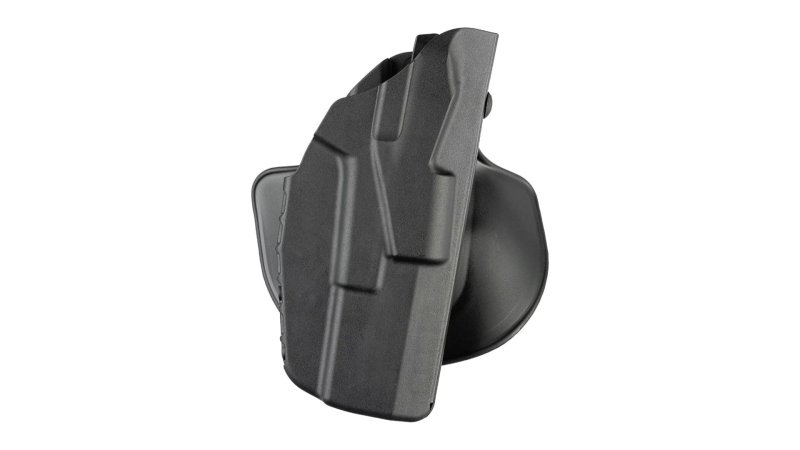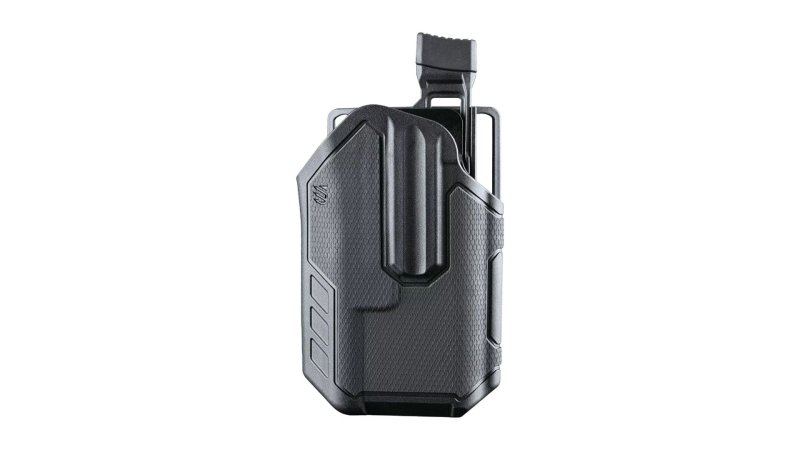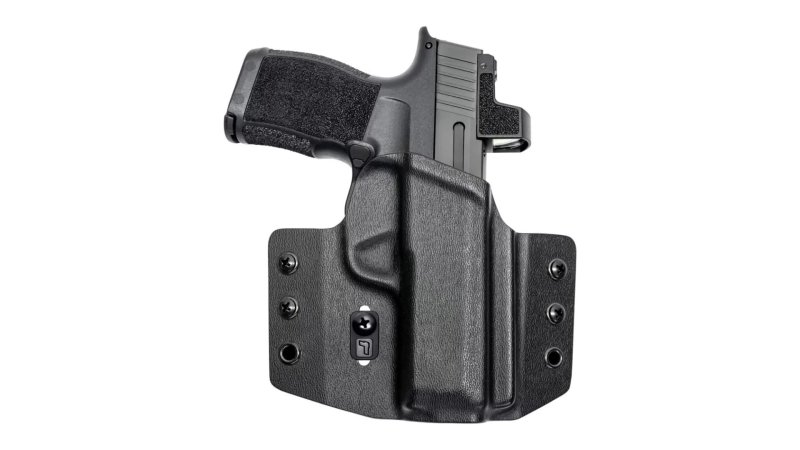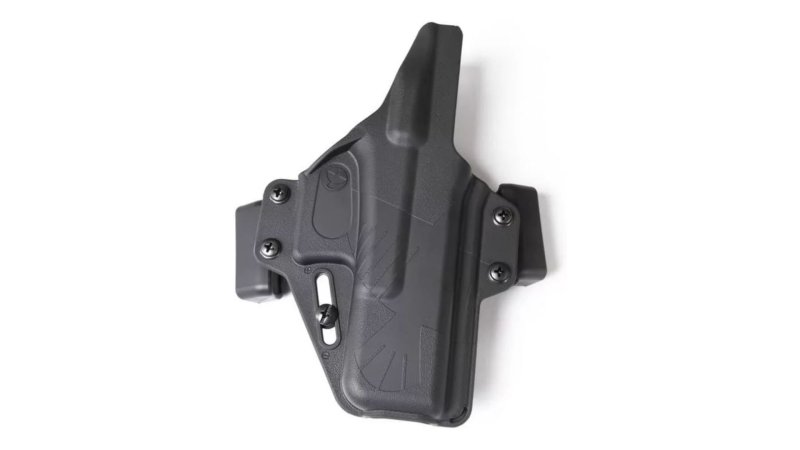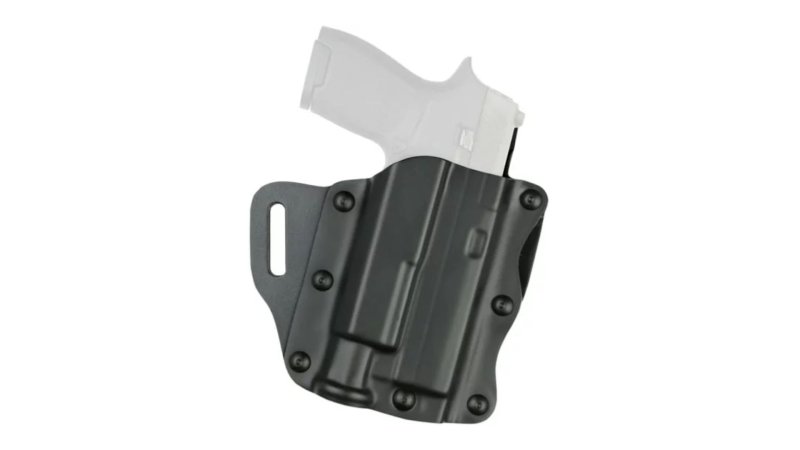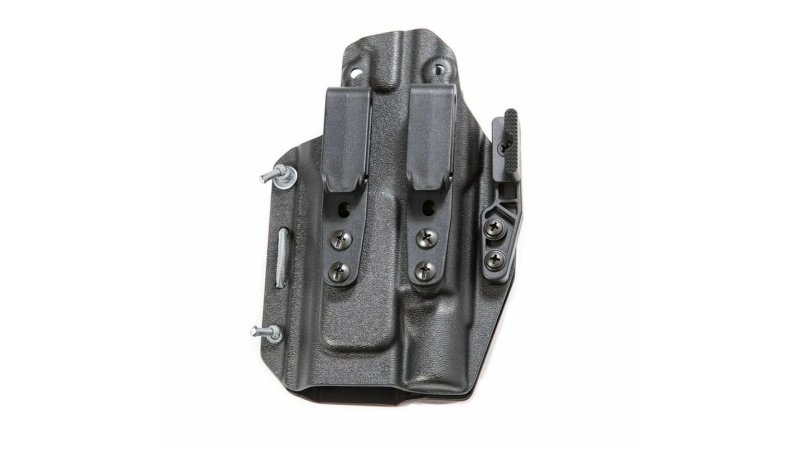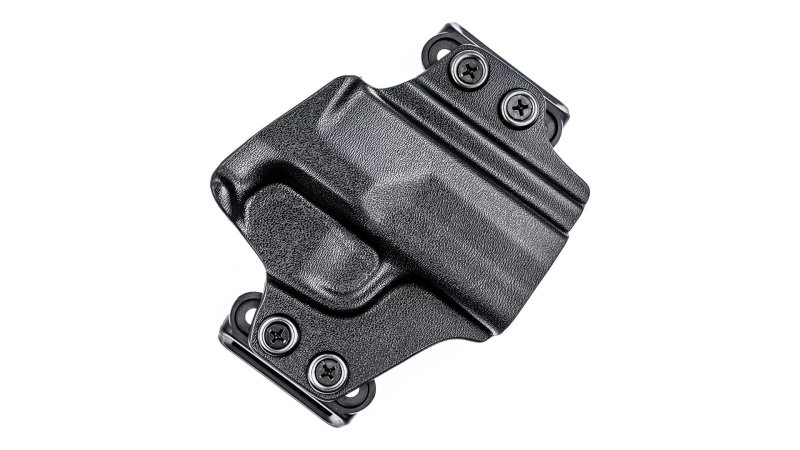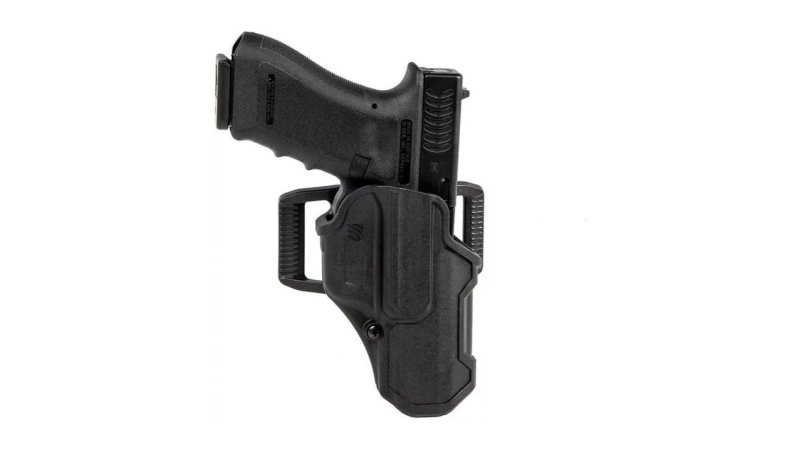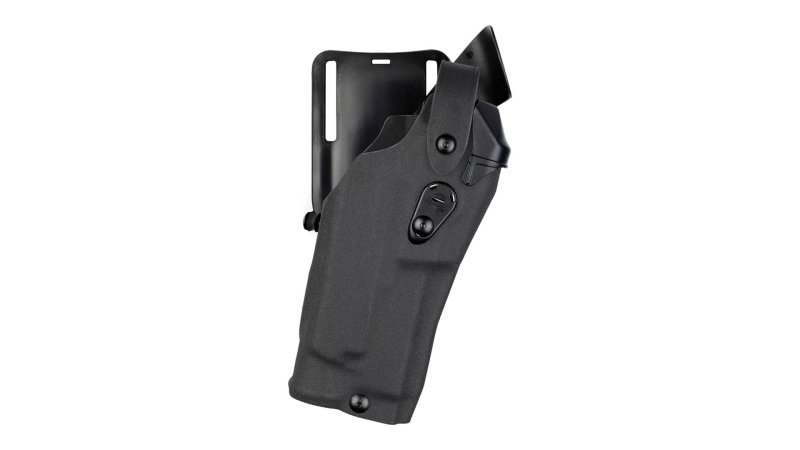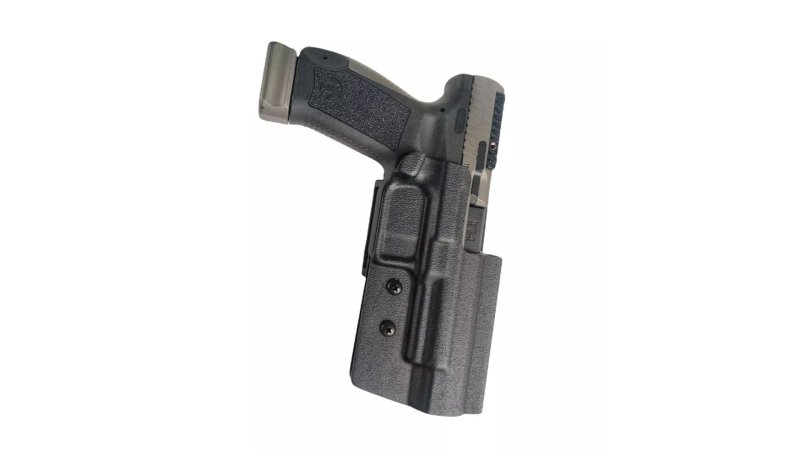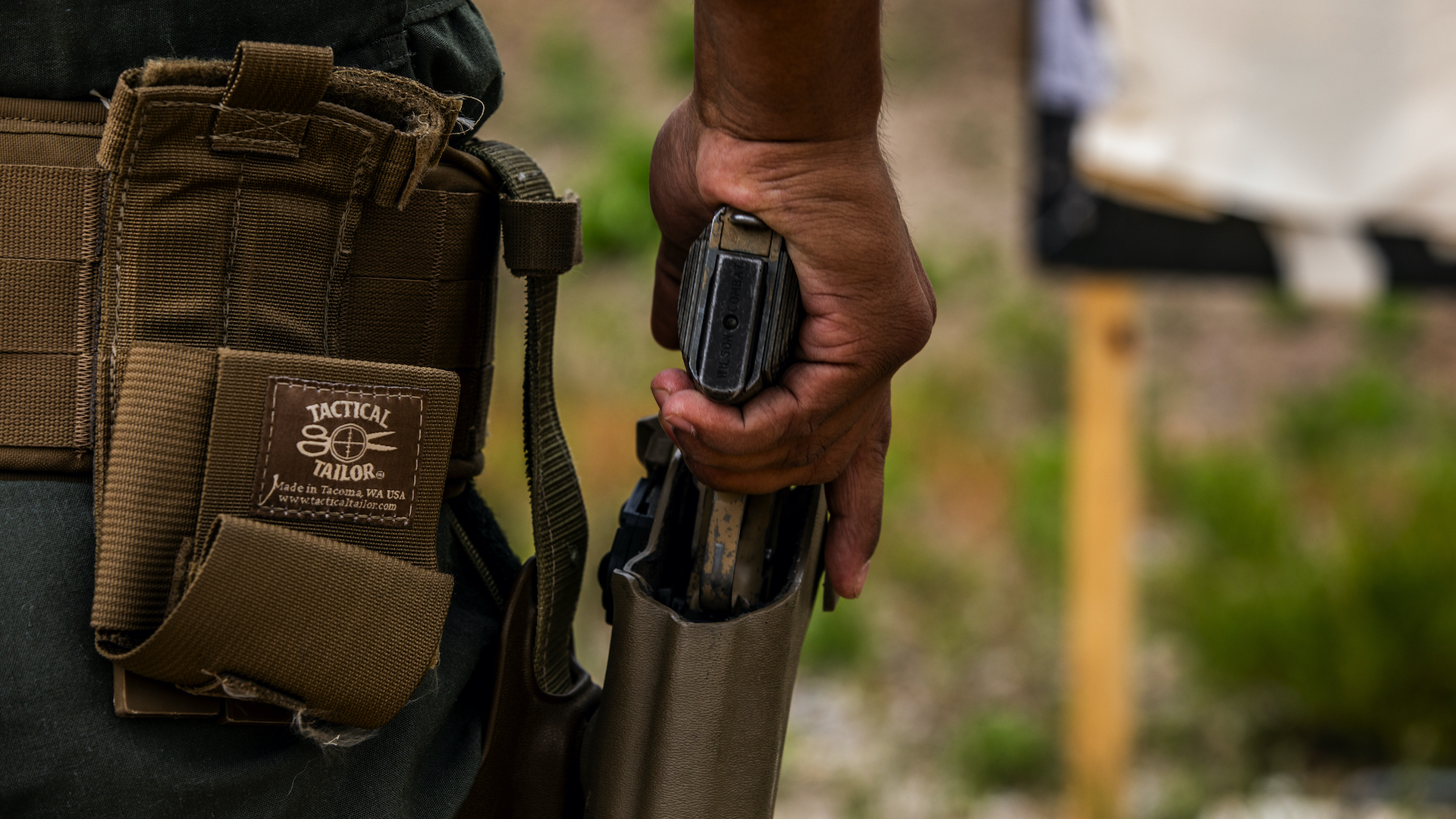

We may earn revenue from the products available on this page and participate in affiliate programs.
The modern holster crowd is all about AIWB — or appendix inside-the-waistband carry — but today, you get to gear up with an OWB OG and take a look at the best OWB holsters in production. And just in case you were wondering, OWB stands for outside-the-waistband carry. It’s the fancy way of describing these holsters.
We are diving deep into the holster world and pulling out OWB holsters for all uses and situations you might find yourself in. We are going to cover holsters for duty, concealed carry, competition, and more. We’ve got a little something for everyone.
We’ve put a focus on high-quality holsters from proven manufacturers that account for safety, retention, access, and how the holster works in specific situations.
- Best Overall: Safariland 7378
- Best Value: Blackhawk Omnivore
- Editor’s Choice: Tulster Contour
- Best for Concealed Carry: Raven Concealment Systems Perun
- Best Light-Bearing: Safariland 557 Open Top
- Best Universal: PHLster Floodlight
- Best Reversible: Concealment Express OWB Belt Loop Holster
- Best Compact: Blackhawk T-Series L2C
- Best Duty-Ready: Safariland 6360RDS
- Best Competition: Dara Holsters Action Sport Holster
Methodology
I’ve packed a mohaska in an OWB rig for over a decade and for various purposes. I’ve strapped an M9 to my side for trips worldwide, stuck a P365 there for daily carry, and tossed on my custom P320 to (try to) bring home gold. My experience with OWB holsters goes far and wide, and I’ve got a box full of holsters to prove it.
Choosing good holsters can be challenging, and with so many out there, you might wonder how we came up with our picks. It’s a valid question, and we used a combination of experiences from the Task & Purpose brain trust. Our top picks offered the most versatile combination of features paired with safety, security, and access.
When in doubt, we looked to professional firearm experts like Garand Thumb, podcasts like Primary and Secondary, and the choice of military forces, pro competitors, police officers, and firearm instructors. For more information on how we pick the best, check out the Task & Purpose editorial guidelines.
Best Overall
Safariland 7378
Pros
- Compatible with Safariland aftermarket
- Super versatile for multiple purposes
- Made to last
- Affordable
Cons
- Bigger guns will be harder to conceal
Product Specs
- Retention: Active
- Material: Polymer
- Recommended use: Versatile
Best Value
Blackhawk Omnivore
Pros
- Affordable
- Fits over 150 different guns (according to Blackhawk)
- Provides active retention
Cons
- Bulky
Product Specs
- Retention: Active
- Material: Polymer
- Recommended use: Range and hiking
Editor’s Choice
Tulster Contour
Pros
- Comfy
- Made for tons of guns
- Safe and secure
- Easily concealed
Cons
- Belt loops are squared and cause belt hangups
Product Specs
- Retention: Passive
- Material: Polymer
- Recommended use: Concealed carry
Best for Concealed Carry
Raven Concealment Systems Perun
Pros
- Easily concealed
- Fits modern accessories and parts
- Easy to draw from
Cons
- Only fits Glocks and Sigs
Product Specs
- Retention: Passive
- Material: Polymer
- Recommended use: Concealed carry
Best Light-Bearing
Safariland 557 Open Top
Pros
- Fits a ton of guns and lights
- Works with and without light
- Provides a tough, supportive holster
Cons
- Somewhat bulky
Product Specs
- Retention: Passive
- Material: Polymer
- Recommended use: Concealed carry
Best Universal
PHLster Floodlight
Pros
- Compatible with multiple firearms
- Compatible with aftermarket attachments
- Modular retention, ride height, and cant
Cons
- Expensive
- Limited use
Product Specs
- Retention: Passive
- Material: Polymer
- Recommended use: Range and competition
Best Reversible
Concealment Express OWB Belt Loop Holster
Pros
- Modular
- Easily reversible
- Adapts to modern guns
Cons
- No sweat guard
Product Specs
- Retention: Passive
- Material: Kydex
- Recommended use: Concealed carry
Best Compact
Blackhawk T-Series L2C
Pros
- Red dot compatible
- Thin and lightweight
- Produced for numerous handguns
Cons
- Limited support for mounting options
Product Specs
- Retention: Active
- Material: Polymer
- Recommended use: Concealment
Best Duty-Ready
Safariland 6360RDS
Pros
- Level three retention
- Compatible with modern features
- Designed for duty
Cons
- Isolated to duty use
Product Specs
- Retention: Active
- Material: Polymer
- Recommended use: Duty
Best Competition
Dara Holsters Action Sport Holster
Pros
- Modular
- Fits a wide variety of guns and lights
- IPSC/USPSA legal
Cons
- No after-market compatibility
Product Specs
- Retention: Passive
- Material: Polymer
- Recommended use: Competition
Types of OWB holsters
Because it’s hanging off of your belt, an OWB holster is ideal if you want to open-carry your firearm. They’re typically styled for use on duty, at the range, or during competition, but they’re also styled for concealed carry if that’s what you desire. The difference between the four styles of OWB holsters is usually price and retention.
Concealed carry holster
An OWB concealed carry holster typically uses lighter and thinner materials so you have an easier time fitting the rig under a shirt or jacket. The holster will fit close to your body and shouldn’t cause much printing or unsightly bulges. If you do choose to use OWB for concealed carry, you might not want or need active retention.
Duty holster
An OWB duty holster will make it very obvious that you have a gun on your hip. They’re large, but they’ll hold larger, modified, or full-size handguns, and some will even be designed to wear with other duty gear like plate carriers or battle belts. Of course, because it’s so obvious, you’ll want it to have active and passive retention systems as well as a highly durable construction.
Range holster
For an OWB range holster, you won’t need much. Just something that supports your firearm. While it’s always ideal to have a holster designed with a mold of your firearm, a universal — as in fits any similar-style handgun — could work because you’re in a controlled environment. Of course, you’ll want it to safely cover the trigger. That’s a must.
Competition holster
While you might think an OWB competition holster would be the same as a range holster, you’d be wrong. Competition holsters must meet certain safety and performance standards set by the organization managing the event. Typically, you won’t need duty-level retention, but you will need dependable passive retention. Additionally, you’ll want adjustable features for quick access and draw.
Key features of OWB holsters
Safety
A safe holster reduces the risk of an accidental discharge. Holster makers do this by molding its holsters to fit specific handgun models and fully cover the trigger.
Accessibility
A firearm is only a tool if you can access it. Therefore, a good holster allows you — and only you — to easily access your firearm. This is accomplished with intuitive controls and adjustable features, so you can wear it in a position where it’s accessible.
Retention
For a holster, retention is how well it can secure your handgun. There are two types of retention systems: active and passive. An active system uses controls like a button or switch that you have to engage to unlock and access your firearm. A passive system relies on the tension applied by the holster against your gun
Ride height
Ride height matters quite a bit with OWB holsters. Different tasks work better with different ride heights. Duty and competition guns typically ride low, allowing for a fast and intuitive draw. Concealed carry holsters will ride higher to allow for better concealment with cover garments. Most holsters will allow you to adjust ride height, and duty/competition holsters will likely be compatible with offset drop adapters.
Modularity
Modularity with OWB holsters means a few things. One is the adjustments you can make to ride height and cant. These allow users to tailor the holster for their needs and concealment requirements. Additionally, modular holsters often allow you to switch around your clips, loops, or paddle to make the holster better fit your clothing and gear.
Accessories
What accessories does your gun wear? The presence of lights, red dots, and even tall sights and threaded barrels might be something to consider. If you carry a blinged-out blaster, you need to ensure the holster you’re ordering will fit and function with your many accessories.
Benefits of OWB holsters
Speed and access
Drawing from an OWB holster can be rapid and easy. You can get the gun out and ready with what’s often a good firing grip. OWB holsters are fast in the typical standing position, but also fast and intuitive when drawn from sitting, kneeling, and even prone positions. It’s also easier to reholster with an OWB holster than any other carry method.
Comfort
It’s tough to find a more comfortable way to carry a gun than OWB. An OWB holster reduces pokes, prods, and annoying rubbing. Even when concealed, these holsters tend to be much more comfier, and you can forget you are wearing an OWB holster.
Tactical functionality
When you are wearing backpacks, plate carriers, battle belts, and other tactical gear, an OWB rig is a must-have. Any other option wouldn’t function well, and would likely have an impeded draw when it comes time to pull your smoke wagon.
Pricing for OWB holsters
Budget
At a budget price point between $35 and $50, you can likely find an OWB holster that’s molded to your firearm, as long as your firearm is a popular model. You will likely feel disappointed if you carry something a little different than the Glock and Smith & Wesson varieties. These holsters often offer passive retention and potentially red dot compatibility, but light-bearing is unlikely to be an option.
These holsters are suitable for range use and even concealed carry, but are not the best option for duty use. They are typically safe and well-made, but generic mass-produced designs.
Mid-range
We’ll still be stuck with your more popular firearm platforms in the mid-range platform, but you’ll likely begin to find some red dot, suppressor height sight, and even light compatibility in the $50 to $75 range. We also see the entry of both active or passive retention and more modular designs. These holsters are well-suited for competition, concealed carry, and range use.
High-range
This is where we spend the money required to get a holster for nearly any gun and light combo. At the $75 to $150 price point, we see companies making made-to-order holsters, offering you a holster to fit your CZ P01 outfitted with a Surefire XC1 and a Trijicon RMR.
We also see proper duty holsters appear and give professional gunslingers options for their daily carry needs. We start to see companies with stellar reputations making holsters for concealed carry that are modern, modular, and often multi-purpose. These holsters will be built for daily use and rough training.
Premium
At the premium price point of $150 and up, we are seeing the best of the best. These concealed carry holsters will last through the hardest of training and keep swinging. We often see very modular holsters in this department that are chock-full of features and options to accommodate modern firearm accessories.
In the competitive world, these are the holsters you see professional shooters using and often winning with. For those who carry for duty purposes, it’s the choice that offers compatibility with the most gear and belt types, as well as the ability to use all modern weapon accessories.
FAQs about OWB holsters
You’ve got questions, Task & Purpose has answers.
Q: Can you conceal an OWB holster?
A: Yep, it can be more challenging, but tons of OWB holsters are designed for concealment.
Q: IWB vs. OWB: Which one is better?
A: It depends entirely on the purpose and mission — both have strengths and weaknesses.
Q: Is it legal to use an OWB holster?
A: Yep, completely legal. However, competitions might have specific requirements.
Q: Is OWB open-carry?
A: It can be open-carry, but is not necessarily open-carry only.
